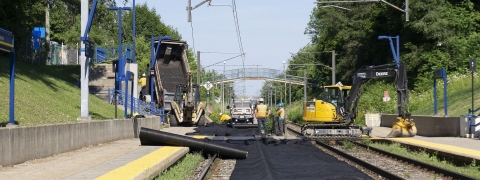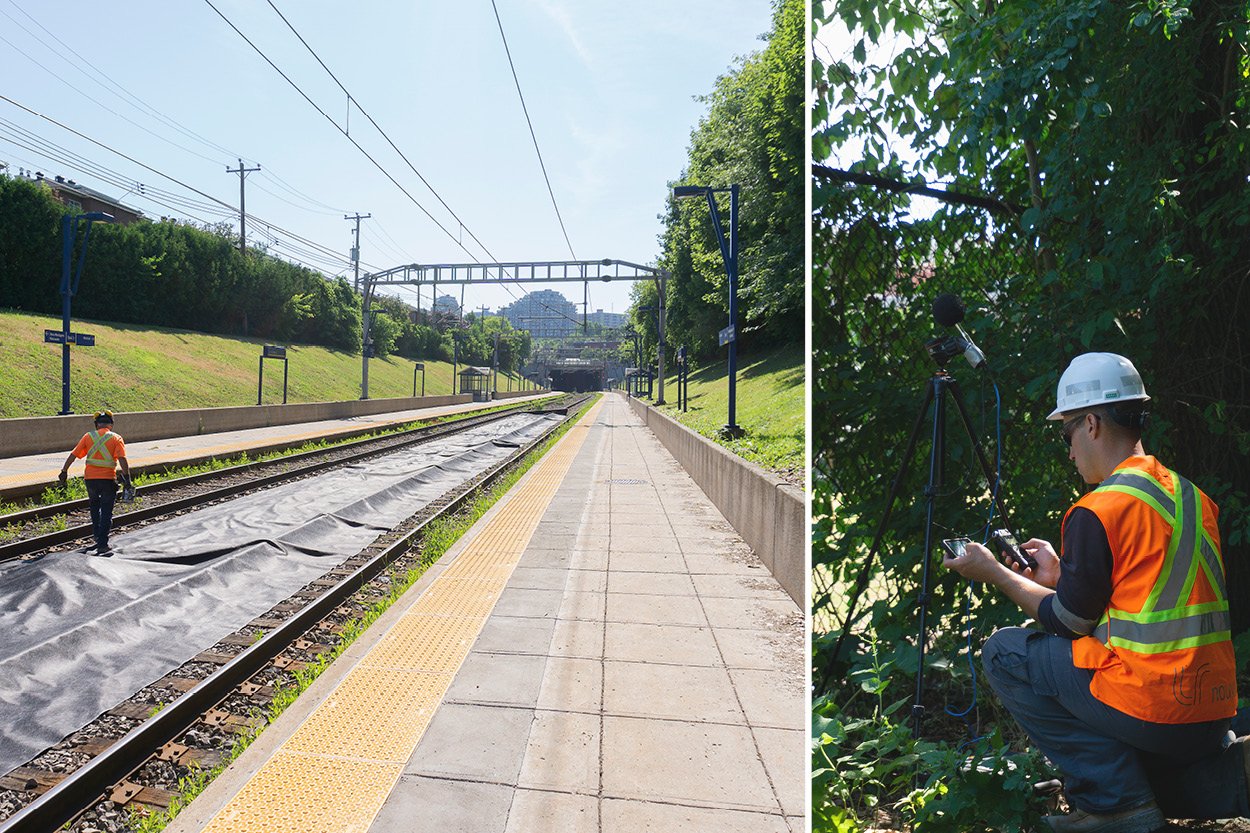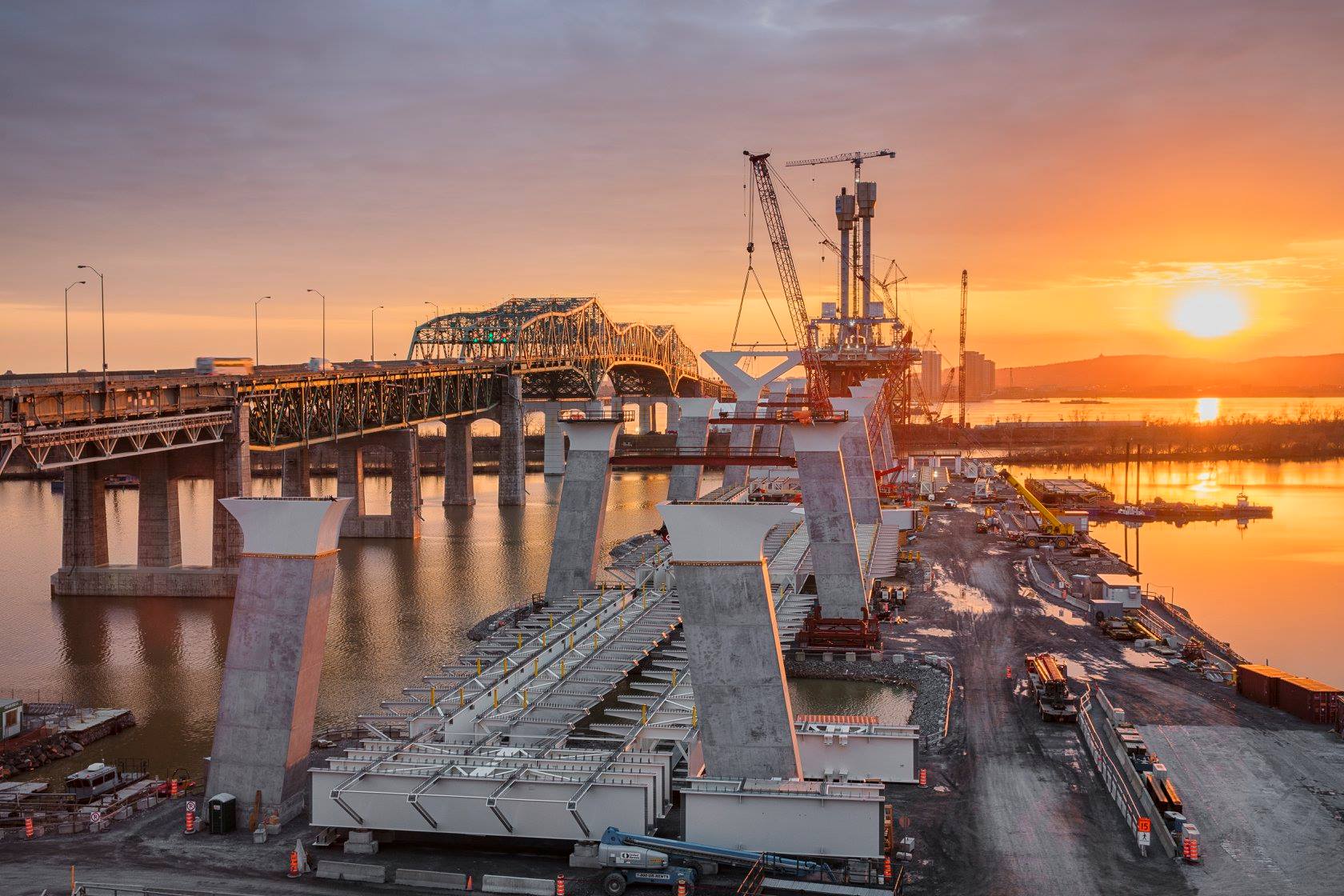
We explain the REM preparatory work
Geotechnical drilling, surveying, hydro-excavation... We explain the REM work taking place in the first quarter of construction. The work is hard to see from the surface, but it’s essential for the next steps of the project.
1. Data collection: geotechnical drilling and surveying
In the first step of construction, several investigations have taken place along the length of the REM route since March 2018.
- Geotechnical drilling assesses soil composition and resistance. We insert a probe into the ground in order to retrieve soil samples. The data is used to calculate resistance and finalize plans before the construction of infrastructure (routes, stations, bridges).
- Surveying provides data about the surface. The instruments measure the topographical characteristics of the areas crossed by the REM down to the smallest detail (exact distances, natural or artificial features) so that plans can be updated with the most recent data.
 Preparatory work and geotechnical drilling along the Deux-Montagnes line
Preparatory work and geotechnical drilling along the Deux-Montagnes line
2. Testing the infrastructure: construction of the REM test piles
You may have noticed along the future route at Kirkland and Bois-Franc that test piles have been temporarily installed in these sectors. The goal: conduct a series of tests over several weeks to determine the soil’s stability as well as its reaction when it is subject to heavy loads. After the tests, the piles will be demolished to make way for the permanent infrastructure.
3. Minimizing construction noise: noise measurement campaign
REM work sites are governed by standards that were set by environmental decree. In the last several months, our team has taken noise measurements in several residential neighbourhoods, including Édouard-Montpetit and along the Deux-Montagnes line. The goal is to establish a reference point for the neighbourhoods affected by the construction and implement mitigation measures where necessary (install acoustic screens, reduce noise at the source on the equipment, turn off idling truck engines).
 Noise measurements at the Canora train station
Noise measurements at the Canora train station
4. Maintaining public services: identifying and relocating public utilities
We don’t build just anywhere! Before we start, workers are tasked with identifying the location of underground and aerial public utilities (water, electricity and gas lines) along the entire 67 km route. It is sometimes necessary to relocate existing installations so that work can continue safely.
In the case of underground utilities, hydro-excavation allows us to dig with a high-pressure water jet and suction the loosened material as work progresses. This technique limits the impact on the immediate environment, generates no dust and reduces the risk of damaging infrastructure.
![]()
All of this preparatory work is essential for building the REM’s foundations and ensuring the safety of workers and local residents.
Next step: Construction of the first pile on the South Shore in August, at the location of the future Du Quartier station. This work will be more visible and will undoubtedly attract attention from curious onlookers. Check back in a few months to see photos that we hope are as beautiful as the view from the new Champlain Bridge.
 Sunset over the work site on the new Champlain Bridge, which the REM will cross in 2021
Sunset over the work site on the new Champlain Bridge, which the REM will cross in 2021
Photo credit: Facebook page, Nouveau pont Champlain